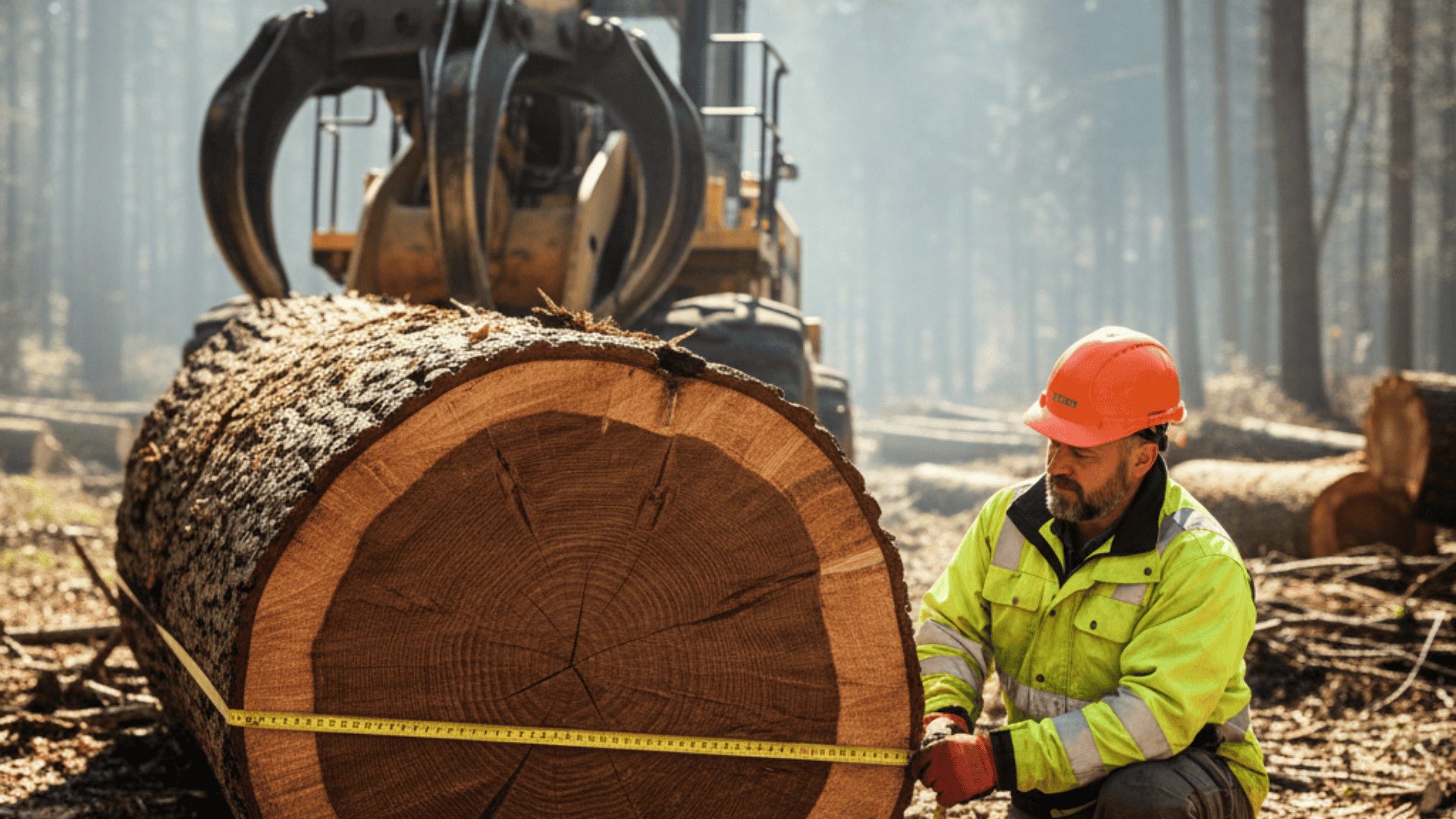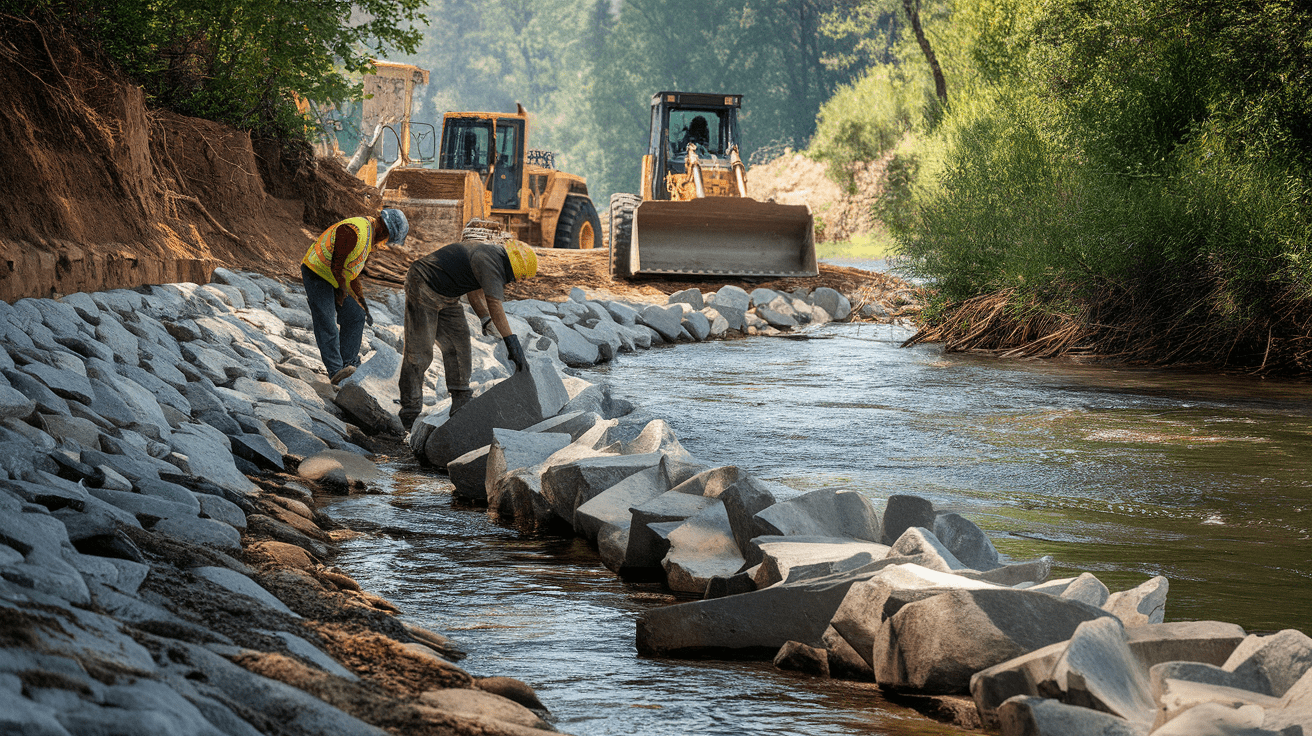Have you ever stood next to a towering oak and thought about its actual mass?
Being a longtime nature lover, this question comes up more than you’d think.
During morning walks, I learned that estimating tree mass isn’t just curiosity.
It’s important for safe transport, proper equipment selection, and efficient planning.
The weight varies dramatically based on species, size, age, and moisture levels.
A full-grown oak can tip the scales at several tons, while a pine of similar height weighs considerably less.
In this post, I’ll share the practical methods I use to calculate tree mass and explain why this knowledge matters for anyone working with trees.
How Much Does a Tree Weigh?
The tree’s weight varies greatly depending on what you’re measuring.
A mature oak typically weighs between 4 and 5 tons when standing, and Pine trees are lighter, usually 1 to 2 tons for a full-grown specimen.
The difference is noticeable; hardwoods like maple and walnut fall closer to oak’s range, and moisture content makes a huge impact, too.
A freshly cut tree holds much more water, sometimes adding 30% to 50% more weight than after drying.
These numbers help to plan equipment loads and ensure safe handling on every job.
How Much Does a Big Tree Weigh?
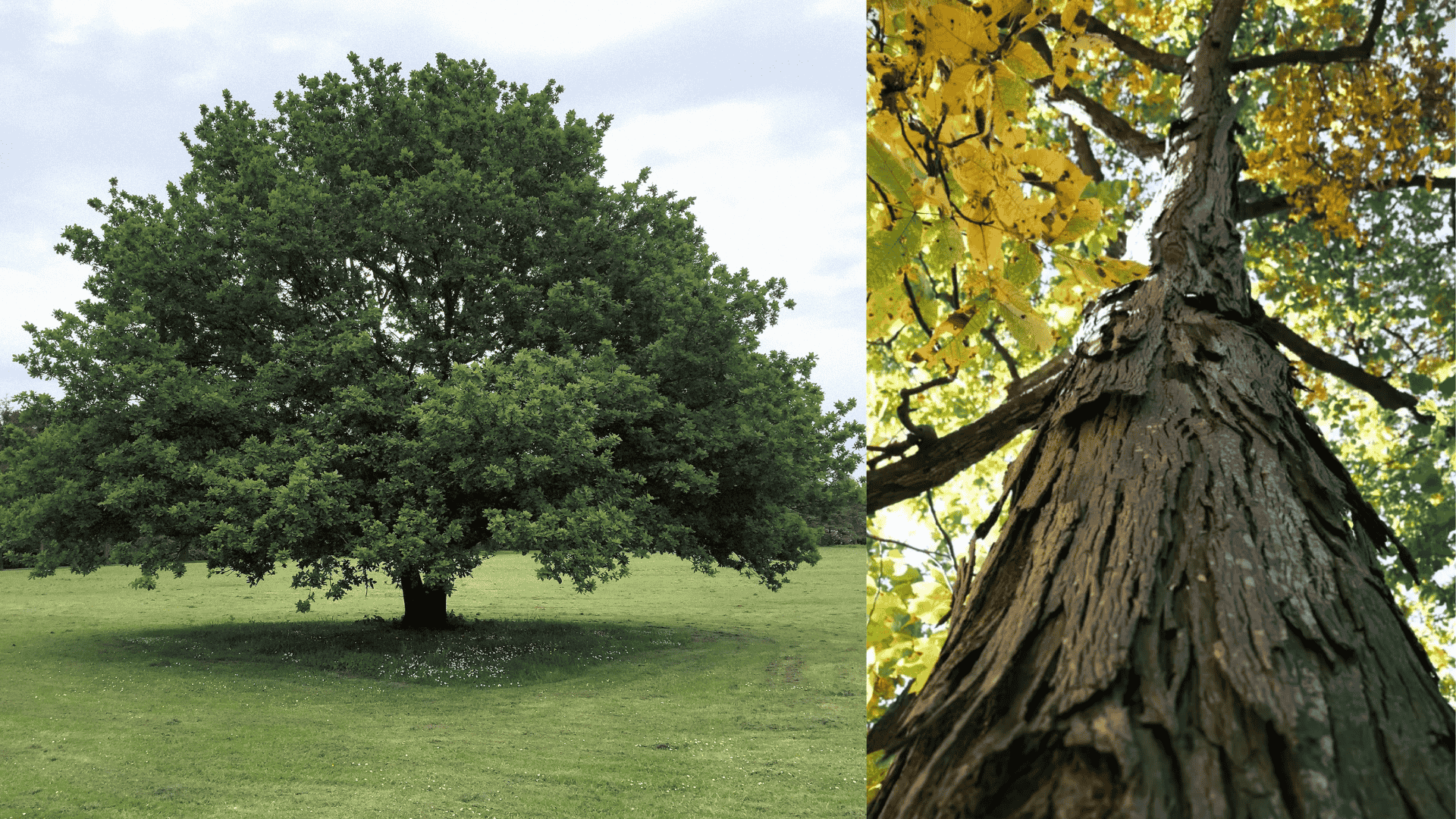
Large, mature trees can weigh several tons, making careful planning important for safe handling and transport.
A fully grown oak tree usually weighs between 4 to 5 tons, while large maple or hickory trees can exceed 6 tons, especially when moisture levels are high.
Trees weighing more than 5 tons generally require mechanical support.
Using cranes or heavy-duty loaders helps ensure stability, efficiency, and safety during movement.
Accurate weight assessment is also an important part of responsible tree management.
How Much Does a Small Tree Weigh?
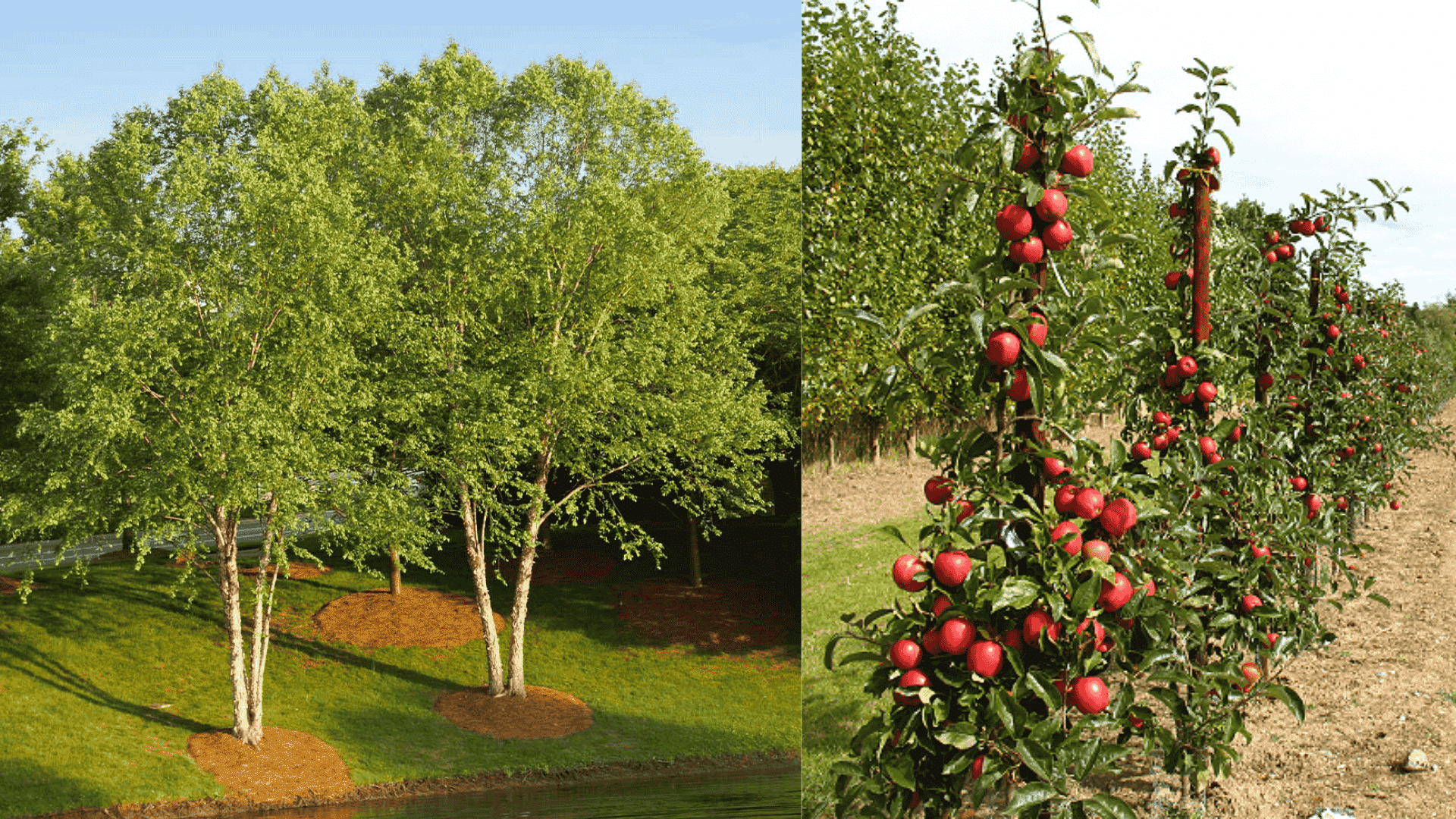
Smaller trees are much easier to move and plant compared to fully grown ones.
A 10-foot pine or birch tree generally weighs between 50 and 150 pounds, depending on how large and moist the root ball is.
Young fruit trees, such as apple or cherry varieties, often weigh less than 100 pounds.
In most cases, two people can handle an 8-foot tree weighing around 80 pounds without the need for special equipment.
This makes smaller trees practical for home landscaping projects.
It’s also important to consider that the root ball contributes a large portion of the total weight, not just the trunk or branches.
How Much Does a Tree Weigh in Tons?
In forestry and industrial work, tree weight is often measured in tons to simplify planning for transport and equipment use.
This unit helps determine truck load capacity and the machinery needed for safe handling.
On average, a mature oak tree weighs around 4–5 tons, a pine tree weighs about 1–2 tons, and a maple tree falls between 3–4 tons.
Accurate weight estimates prevent overloading and ensure safety during transport.
For reference, 1 ton equals 2,000 pounds, meaning a 4-ton oak weighs approximately 8,000 pounds in total.
What Determines the Weight of a Tree?
Several key factors influence a tree’s total weight, and knowing them is important for accurate estimation.
Elements such as species, size, age, wood density, and moisture content all contribute to how heavy a tree becomes.
Recognizing these factors allows for more precise calculations before cutting, transporting, or weighing a tree.
- Species: Hardwoods like oak and maple have denser wood than softwoods such as pine or cedar.
- Tree Size and Age: Taller and older trees generally weigh more due to increased wood volume.
- Moisture Content: Freshly cut trees hold more water, making them significantly heavier.
- Wood Density: Trees of the same size can differ in weight depending on their wood type and internal structure.
How Much Does a Log Weigh in Pounds?
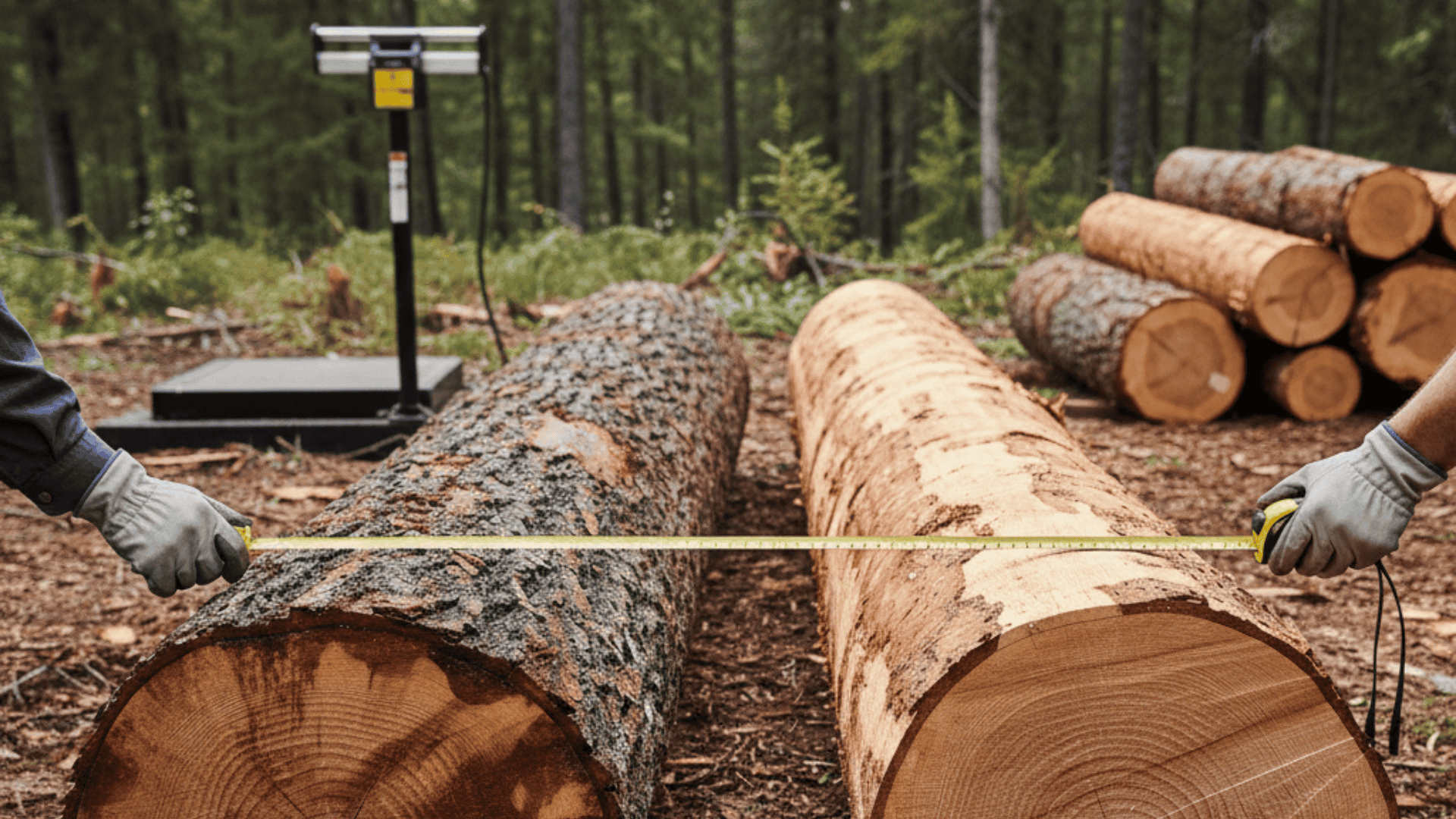
Log weight varies from a full tree because it measures only a cut section.
For instance, an 8-foot oak log about 20 inches thick can weigh over 1,000 pounds, while a pine log of the same size weighs around 600 to 700 pounds.
These differences matter in milling and transport.
Always consider water content; fresh logs are significantly heavier than seasoned ones.
Accurate weight estimation ensures safe and efficient handling.
How to Estimate a Tree’s Weight?
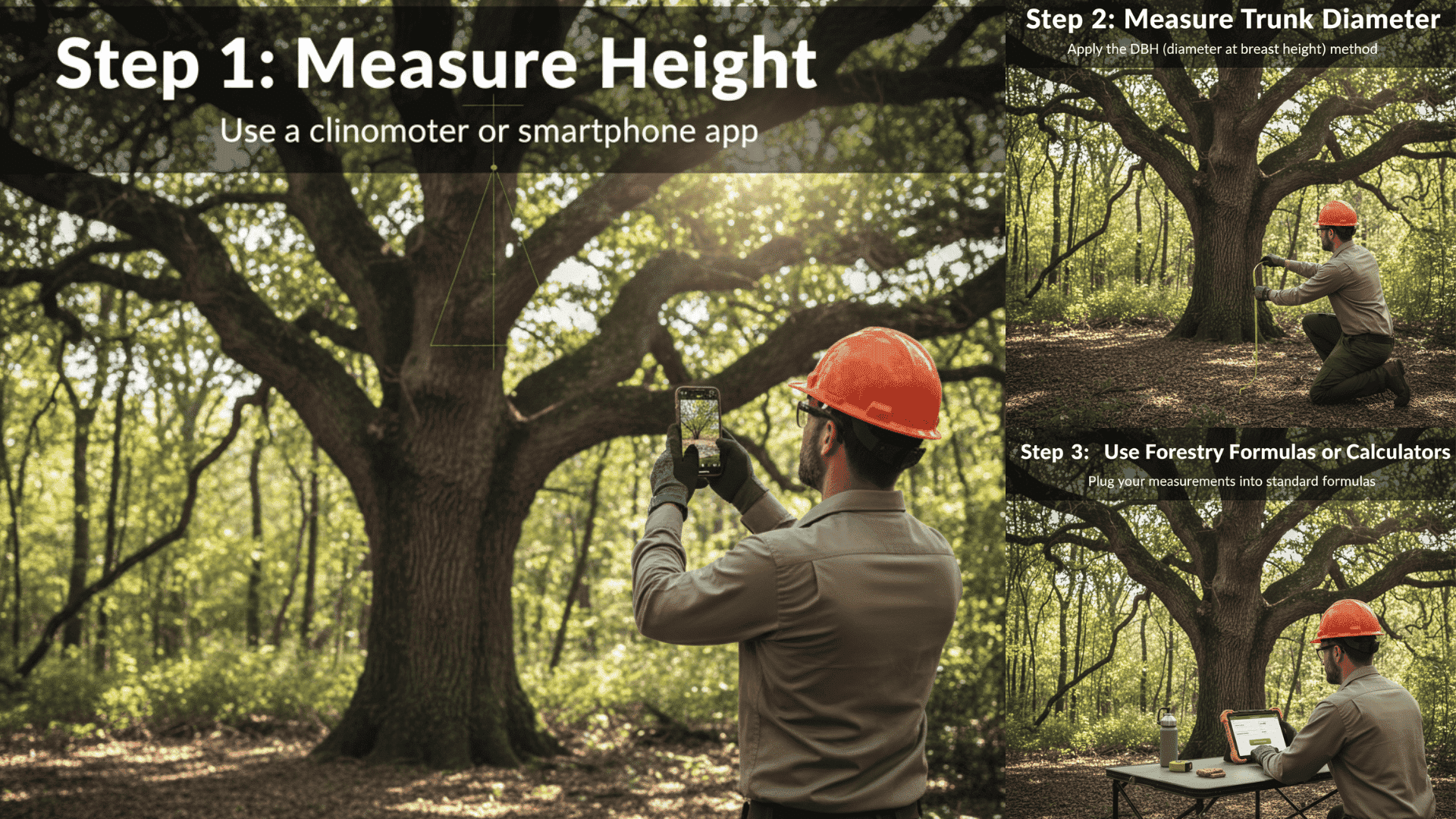
I use a simple three-step method to estimate tree weight accurately.
This approach has worked reliably across hundreds of projects.
Step 1: Measure Height
Use a clinometer or smartphone app to measure the tree’s total height.
I typically stand at a distance equal to the tree’s estimated height for the most accurate reading.
Step 2: Measure Trunk Diameter
Apply the DBH (diameter at breast height) method.
Measure the trunk diameter at 4.5 feet above ground level.
Use a diameter tape or wrap a measuring tape around the trunk and divide by 3.14.
Step 3: Use Forestry Formulas or Calculators
Plug your measurements into standard forestry formulas or trusted online calculators.
I often cross-reference multiple calculators for verification.
The actual weight came in at 4.3 tons, very close.
Tools for Measuring Tree Weight
Accurate tree weight estimation depends on using the right tools for measurement.
A few basic instruments can make the process reliable and consistent:
- Diameter Tape (DBH Tape): Measures the tree’s trunk diameter accurately at 4.5 feet above ground level.
- Clinometer or Height App: Helps determine the tree’s total height quickly and safely.
- Tree Scale or Load Cell: Used by professionals to weigh felled trees or large logs directly.
- Moisture Meter: Estimates the water content in wood, which affects overall weight.
- Tree Weight Calculator: Digital tools or online calculators that use formulas based on species, height, and diameter.
Why Knowing Tree Weight is Important?
Knowing tree weight isn’t just technical knowledge; it has real, practical applications.
Most projects fail because the weight was underestimated.
This is why it matters:
Forestry and Logging: Helps plan loads and prevents equipment strain or damage.
Transportation: Ensures compliance with weight limits and avoids safety risks on roads.
Environmental Impact: Used to estimate biomass and carbon storage for conservation studies.
Safe Handling and Transport Tips
Safety is a top priority when handling heavy trees, and following proper techniques helps prevent accidents and damage.
The key practices that I follow:
- Use proper lifting equipment: Cranes and heavy-duty rigging gear are essential for trees over 1 ton.
- Inspect equipment before each use: Check cables, hooks, and hydraulic systems for wear or damage.
- Secure loads with multiple tie-down points: I use at least four anchor points for transport stability.
- Calculate weight before lifting: Never guess, always estimate weight using the methods I shared earlier.
- Maintain clear work zones: Keep bystanders at least 50 feet away during tree removal or transport.
- Hire certified arborists for complex jobs: Large or unstable trees require professional expertise and specialized tools.
Conclusion
Accurate tree weight estimation depends on proper measurement and attention to detail.
Using a simple three-step method, measuring height, diameter, and species, can help achieve consistent results.
Hardwoods generally weigh more than softwoods, and freshly cut trees retain higher moisture, adding extra weight.
Reliable weight data is vital for safe removal projects and environmental calculations.
Start by measuring a single tree with the DBH method and compare the results with standard charts for accuracy.
For more tips or to share insights, leave a comment below and join the discussion.
Frequently Asked Questions
Can One Person Carry a Christmas Tree?
Yes, most Christmas trees between 5 to 7 feet weigh 20 to 50 pounds and can be carried by one person.
How Heavy Is the Rockefeller Tree?
The Rockefeller Center Christmas tree typically weighs between 10 to 12 tons, depending on the year’s selection.
How Heavy Is a 20 Ft Tree?
A 20-foot tree weighs approximately 1,000 to 2,000 pounds depending on species and moisture content.

